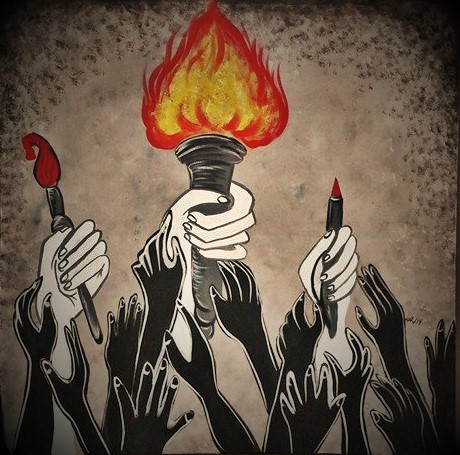
Several weeks into Gotabaya Rajapaksa’s presidency, journalists on the island are coming under increasing threat. Whilst the island has always been a dangerous place for the press, and for Tamil journalists in particular, over the last month there has been a worrying rise in intimidation, harassment and even physical assaults of media workers, alongside political activists and human rights defenders. A growing climate of fear has returned - nowhere more palpable than in the Tamil North-East, where tens of thousands of Sri Lankan soldiers continue their military occupation. On an island where the state has a violent and deadly record of repression, this is extremely alarming. Urgent steps must be taken to protect those most at risk.
Last week, plainclothes Sri Lankan police officers entered the home of the Tamil Guardian’s Batticaloa-based correspondent and threatened his family, after he reported on alleged corruption taking place within the local government. Days later, he was charged with trumped-up offences and ordered to appear in court. Earlier this month, a Tamil civil society activist was assaulted by members of the government-aligned EPDP paramilitary group. Tamil newspapers also have once again begun to receive visits from the police. In the south too, violence against media has flared. These incidents must not be taken lightly. Many now fear the island is sliding back towards the era of violence that saw dozens of Tamil activists and journalists assassinated, disappeared or forced into exile.
This is not surprising considering Rajapaksa’s brutal record. His tenure as defence secretary saw an extraordinarily high number of journalists killed and the island slide down world press freedom rankings. According to a report by Together Against Genocide, from 2004 to 2009, over 48 journalists and media workers were reported killed, 41 of whom were Tamil. Whilst defence secretary, Rajapaksa stated that dissent during a time of war is treason. He has been almost as frank in recent weeks, declaring that only “favourable media reporting” must be allowed. Furthermore, as Sri Lanka’s president and minister of defence, he swiftly swept up several state institutions, including those that govern the media, under his defence portfolio. These are all deeply troubling developments, under a regime that is not unfamiliar to ruling through violence.
Indeed, despite the dozens of primarily Tamil media personnel who have been disappeared and killed, no one has been held responsible for their deaths. In fact, one of Rajapaksa’s first moves after becoming president was to have the security detail of Criminal Investigation Department (CID) investigator Nishantha de Silva withdrawn. The officer was working on the case of Sinhala editor Lasantha Wickrematunge - one of the few cases of a journalist killed to gain traction and one that directly implicated the Rajapaksas. Just days later, De Silva fled to seek asylum in Switzerland. When even senior members of the security forces face repercussions for investigating the murder of journalists, it is disturbingly clear that no progress on accountability will be made domestically. Complete impunity for attacks on the press will continue and will enable even further regression to a more repressive and hostile environment for journalists.
The current increase in attacks should also be read as a direct consequence of the failure by the Sirisena-Wickremasinghe regime, and those before it, to hold perpetrators to account and dismantle military intelligence structures that continue to operate with impunity. While post-2015 journalists operated with slightly more freedom, Tamil journalists in particular continued to be under surveillance and faced harassment and intimidation. In 2018, a Tamil Guardian correspondent, his family and friends, were repeatedly interrogated by Sri Lanka's Terrorism Investigation Department (TID). Last year, another of our correspondents was continuously harassed by the security forces. Over the last 5 years, Tamil journalists have been constantly photographed and interrogated by intelligence officers, making them easy targets for a more openly repressive regime. Their safety is now in grave danger.
At a time when there is widespread fear and signs of a more intensive crackdown of human rights defenders, media personnel and the Tamil people, a free and functioning press will be an essential tool to fight an increasingly repressive state. There is a global responsibility to protect this. Without urgent and decisive action to do so, journalists on the island remain in the line of fire.
